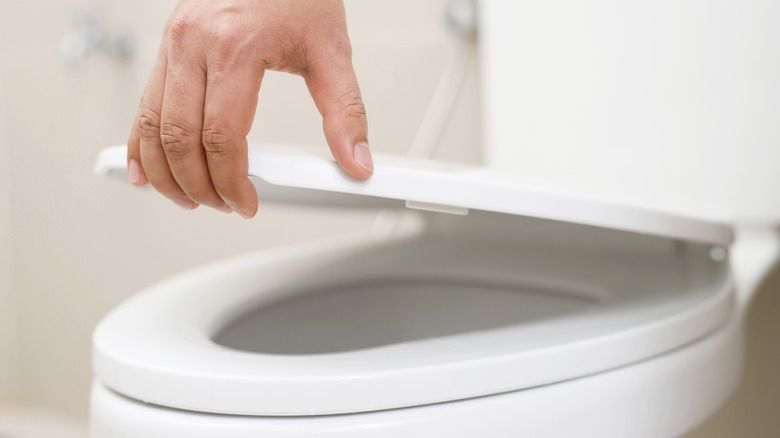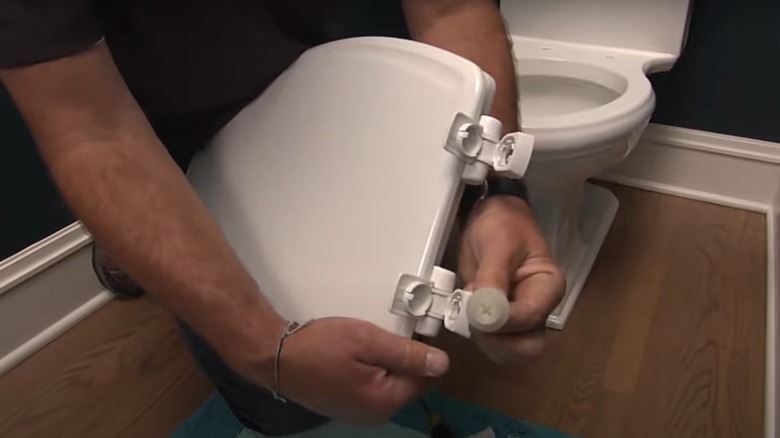Replacing Your Elongated Toilet Seat Hassle-Free Is Easier Than You Think
We may receive a commission on purchases made from links.
When you think about upgrading the look of your bathroom, it's probably design elements that come to mind — perhaps a new shower curtain, or maybe a bathroom mirror idea has inspired an easy update. You may be surprised, though, to learn that most people don't replace their toilet seats as often as they should. Ideally, you should change your seat every five years, and even more often if the seat becomes damaged or discolored. Failing to do so is a toilet mistake you'll want to avoid making, but thankfully, you don't need to hire a professional to replace your seat even if it's one of those elongated types. All you need is a Philips or flathead screwdriver, disinfectant wipes, and maybe an hour of your time.
While searching for a replacement for your elongated toilet seat, you will find many options. To make the right decision, you'll need to understand the exact features these seats offer. Soft-close seats have hinges that prevent the toilet lid from slamming when you drop them while standard ones don't. Aside from being noisy, standard seats made with heavy materials could also damage your toilet bowl. You'll probably see seats with non-slip bumpers that'll keep them from shifting while protecting your bowl. Some come with built-in potty training seats as well. There will also be differences in material and color, and you should choose a seat that matches your toilet's aesthetic.
How to replace your elongated toilet seat
Before replacing the seat, you should clean your toilet. Some toilet seats, like the Bemis 1500EC Elongated Toilet Seat, have lift-off mechanisms that you'll have to turn counter-clockwise to unlock; then, unscrew the wing nut under the toilet rim that keeps the hinge bolt in place. Most seats have hinge covers or caps that you have to lift to access the hinge bolt. Use your screwdriver to loosen these plastic bolts while holding the wing nut in place (use a plier if you can't reach it). After loosening and removing the bolt and nut, you can remove the toilet seat. Use a disinfectant wipe to clean any dirt that might have collected on the bolt area.
Most new toilet seats come with instructions and installation kits. For common elongated seats, put the bolts through the toilet seat hinges, then insert them through the toilet rim holes before securing them with the wing nuts. Then, just snap down the hinge caps to finish the installation. Alternatively, your new seat might have a hinge with sliders to ensure the seat aligns with the bowl perfectly and accommodate any minor difference in size. In this case, you will put the bolts through the sliders first, then through the bolt holes on the toilet rim, before screwing them down — this ensures the wing-nuts are properly fitted on the other side. Then simply slide the toilet seat hinges into the sliders, confirm the proper fit with the bowl, click the hinge caps down, and the job is done.

